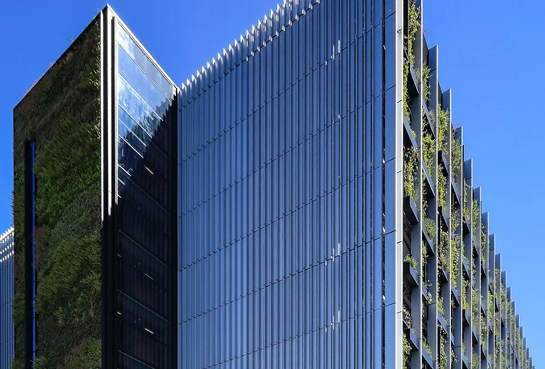
Latest
News
Maple discuss construction strategies for reducing carbon emissions
.jpg)
Topics
- About Maple (100)
- Car Parks (90)
- Office and Retail (47)
- Government (39)
- Rainscreen (36)
- Louvres (30)
- Education (24)
- Residential (24)
- Brise Soleil (22)
- Health (20)
- HSEQ (18)
- Commercial Blinds (16)
- Sustainability (15)
- Data centres (10)
- Pre-Construction services (10)
- Architectural facade (7)
- North West (2)
In celebration of Net Zero Week, Maple has outlined the strategies that façade companies can use to reduce carbon emissions.
Architectural façade companies can implement a range of strategies to help reduce carbon emissions and contribute to net-zero goals. Pre-construction services, value engineering and modern methods of construction are three such strategies that can make a significant difference.
preconstruction services and value engineering
Pre-construction services are essential in identifying and addressing potential sustainability issues before the construction phase begins. These services typically include value engineering, material selection, and cost estimation, all of which are critical in reducing embodied carbon. By thoroughly analysing the project requirements and exploring various material options, façade companies can recommend solutions that align with sustainability goals.
Value engineering is a key part of pre-construction and involves optimising the design and materials used in a project to achieve the best possible balance between cost, performance, sustainability and waste reduction. By carefully planning and executing these strategies, façade companies can ensure that the materials used are both sustainable and cost-effective. This not only reduces the embodied carbon but also contributes to the overall efficiency and performance of the building. For example, for Brentford Car Park, Maple's pre-construction engineers were able to modify the original panel design so that material wastage reduced from 50% to 3% while still retaining the structural integrity and architectural intent.
To learn about Maple's extensive pre-construction services, take a look at 'Maple's Passion for Pre-Construction' article.
modern methods of construction
Additionally, façade companies can adopt more efficient installation techniques that minimise waste, reduce energy consumption, and shorten construction timelines, all of which contribute to lower carbon emissions. For example, prefabrication and modular construction methods allow for more precise material use and less on-site waste.
Another effective strategy is to design façades with modular components that can be easily replaced or upgraded without significant disruption. This approach not only reduces waste but also extends the lifespan of the building envelope. Additionally, using durable and low-maintenance materials can reduce the frequency of replacements, further minimising the embodied carbon over the building's lifecycle.
Advanced technologies such as Building Information Modelling (BIM) can also enhance the accuracy and efficiency of the installation process. BIM allows for better planning and coordination, reducing the likelihood of errors and rework. By adopting these efficient installation methods, façade companies can significantly reduce the embodied carbon of their projects.
In conclusion, by leveraging the expertise of façade companies and implementing efficient installation and replacement strategies, we can make significant strides towards a more sustainable built environment. To see how Maple are contributing to a more sustainable built environment, take a look at Sustainability in Construction: From Complexity to Simplicity.
